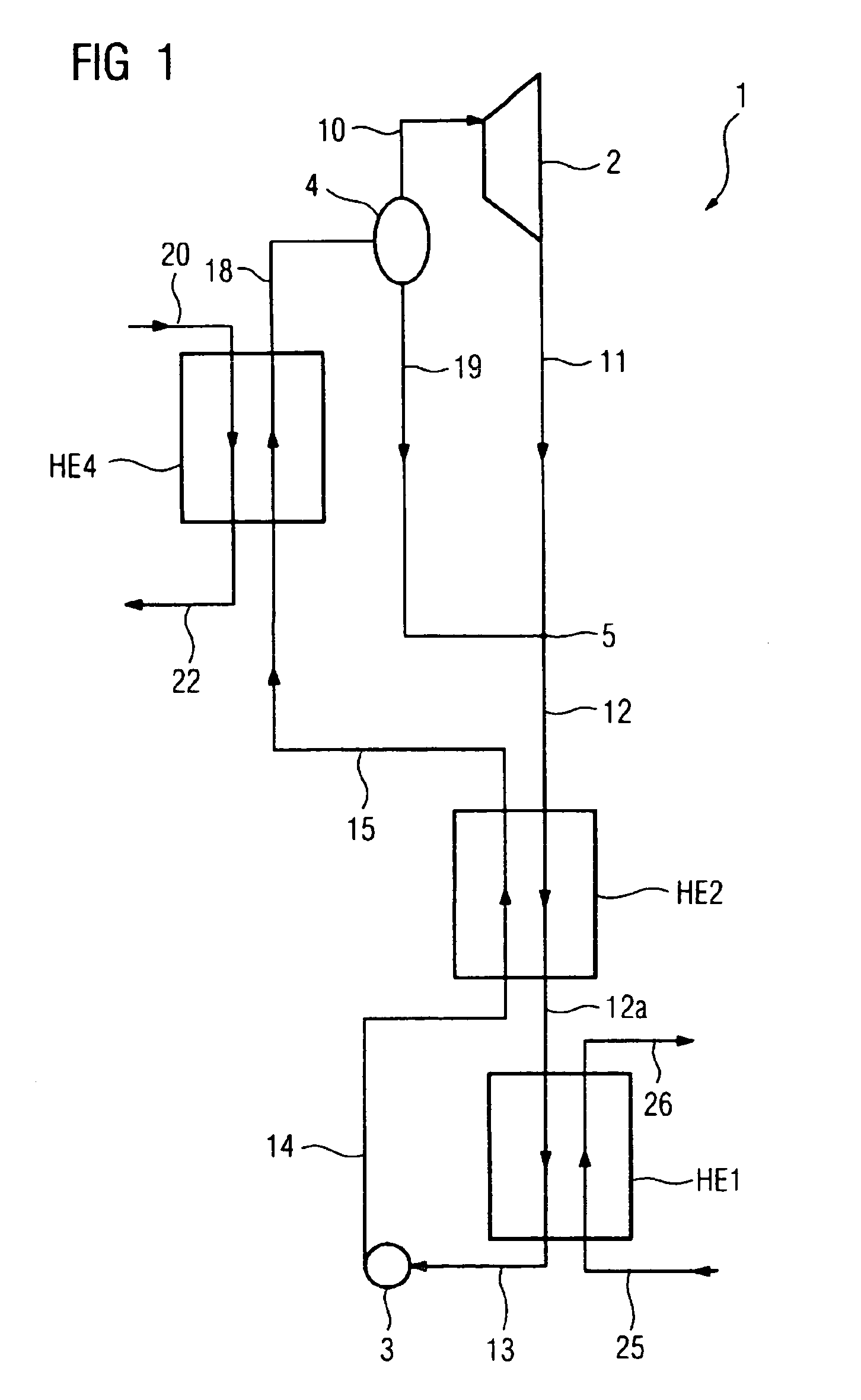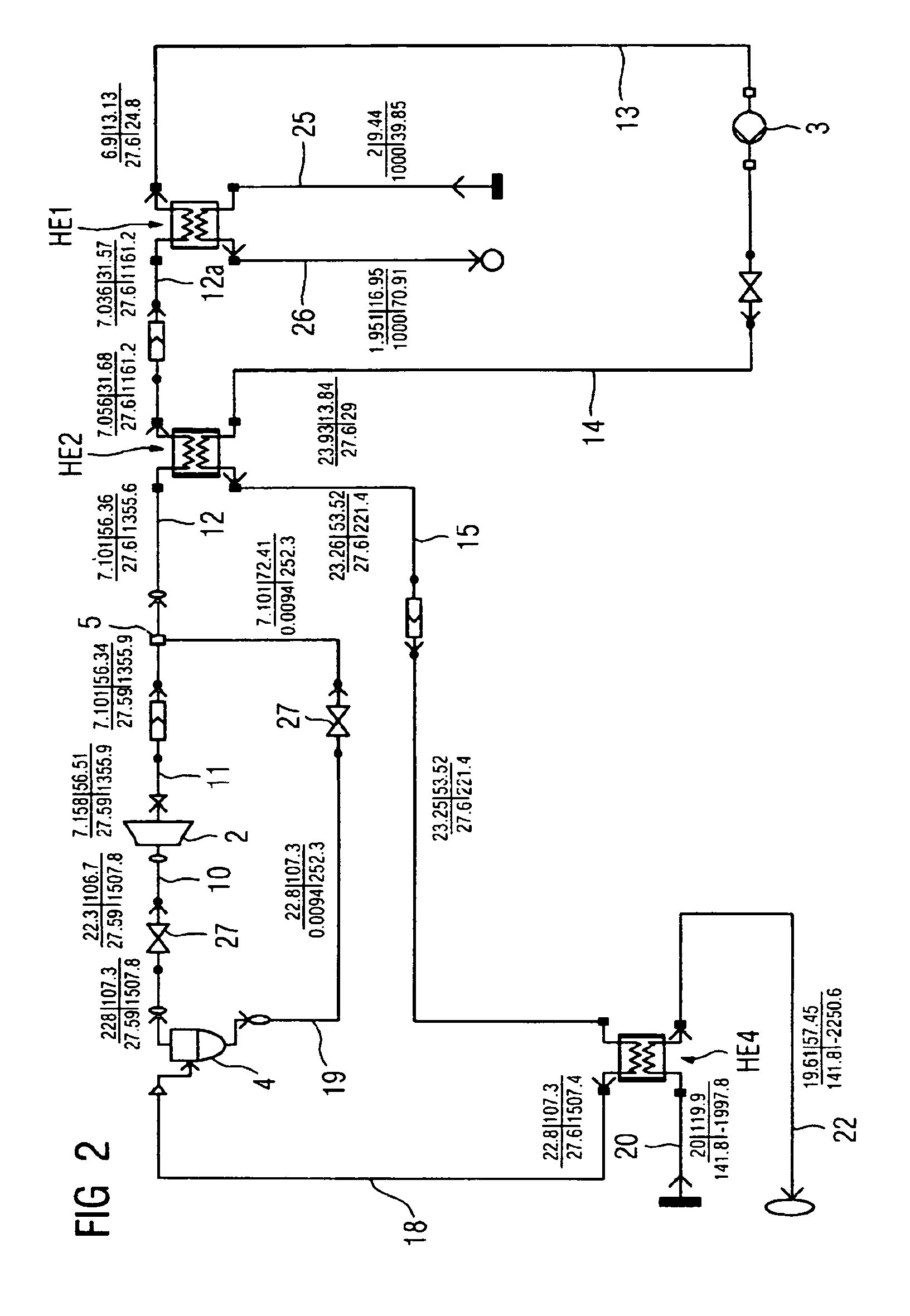Method and device for carrying out a thermodynamic cyclic process
a technology of thermodynamic cycle and process, applied in the direction of machines/engines, steam engine plants, geothermal energy generation, etc., can solve the problems of unfavorable water quality and uneconomical, and achieve the effect of reducing the overall pressure level in the cycle, reducing the boiling temperature of the working medium in its turn, and increasing efficiency
- Summary
- Abstract
- Description
- Claims
- Application Information
AI Technical Summary
Benefits of technology
Problems solved by technology
Method used
Image
Examples
Embodiment Construction
[0023]The device 1 shown in FIG. 1 for executing a thermodynamic cycle process features a (recuperative) heat exchanger HE4, which on the primary side has hot thermal water 20 from a geothermal source not shown in any greater detail flowing through it and is connected on the secondary side on the one hand to a heat exchanger HE2 and on the other hand to a separator 4. The separator 4 is used for separating a vapor phase from a liquid phase of a partly vaporized working medium. A vapor-side output of the separator 4 is connected to a turbine 2. The turbine 2 is connected on its output side to a mixer 5 which is still connected with a liquid input of the separator 4. On the output side the mixer 5 is connected to the secondary side of a (recuperative) heat exchanger HE2 which in its turn is connected to the primary side of a condenser HE1 through which cooling water flows. The condenser HE1 is connected at its primary-side output, if necessary via a condensing tank, via a pump 3 to th...
PUM
 Login to View More
Login to View More Abstract
Description
Claims
Application Information
 Login to View More
Login to View More - R&D
- Intellectual Property
- Life Sciences
- Materials
- Tech Scout
- Unparalleled Data Quality
- Higher Quality Content
- 60% Fewer Hallucinations
Browse by: Latest US Patents, China's latest patents, Technical Efficacy Thesaurus, Application Domain, Technology Topic, Popular Technical Reports.
© 2025 PatSnap. All rights reserved.Legal|Privacy policy|Modern Slavery Act Transparency Statement|Sitemap|About US| Contact US: help@patsnap.com



